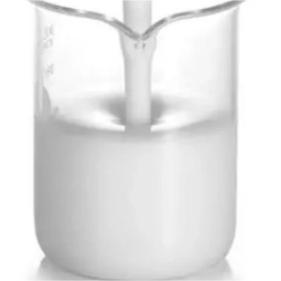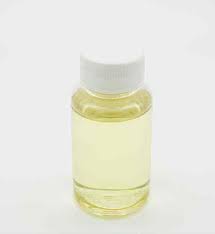Overview of Sodium Carboxymethyl Cellulose CMC for Detergent
Specialty surfactants are a diverse class of surface-active agents designed for specific, high-performance applications where standard surfactants may not meet the required performance criteria. These surfactants are often tailor-made to exhibit unique properties, such as extreme temperature stability, low foam formation, high solubility in specific solvents, or compatibility with particular chemical systems. They are crucial components in formulations demanding precision, enhanced functionality, or strict regulatory compliance, found across industries from pharmaceuticals to advanced materials manufacturing.
Features of Sodium Carboxymethyl Cellulose CMC for Detergent
-
Customized Performance: Developed to meet exacting specifications, offering tailored functionalities beyond generic surfactants.
-
High Efficiency: Designed to work at lower concentrations or under challenging conditions, increasing performance per unit mass.
-
Unique Properties: May exhibit special traits such as non-flammability, low toxicity, high thermal stability, or specific solubility profiles.
-
Regulatory Compliance: Often formulated to meet stringent industry-specific regulations, such as food-grade, medical, or eco-friendly standards.
-
Innovative Chemistry: Incorporate novel chemistries, such as fluorinated, silicone-based, or bio-based structures, to achieve specialized performance.
-
Synergistic Effects: Frequently used in combination with other surfactants to enhance or augment performance in complex formulations.

(Sodium Carboxymethyl Cellulose CMC for Detergent)
Specification of Sodium Carboxymethyl Cellulose CMC for Detergent
Sodium Carboxymethyl Cellulose (CMC) is a key ingredient in detergent formulations. It acts as a soil anti-redeposition agent. This means it stops dirt particles from sticking back to fabrics during washing. The material is a white or light yellow powder. It dissolves easily in water. It forms a clear or slightly hazy solution. The viscosity of CMC varies based on its molecular weight. Low-viscosity grades are common in liquid detergents. High-viscosity types suit powdered detergents.
CMC improves detergent performance by preventing redeposition. It keeps fabrics looking bright after multiple washes. The compound is stable in alkaline conditions. Most detergents work in alkaline environments. This compatibility ensures CMC remains effective throughout the wash cycle. It also enhances the suspension of dirt in water. This allows stains to rinse away without residue.
The purity of CMC matters. Technical-grade CMC is used in detergents. It has a degree of substitution (DS) between 0.6 and 0.9. DS measures how many carboxymethyl groups attach to the cellulose chain. Higher DS values mean better water solubility. Detergent-grade CMC has moderate DS levels. This balances cost and performance.
CMC is safe for skin and environmentally friendly. It biodegrades readily. This reduces pollution risks. The material works with other detergent additives. Enzymes, surfactants, and bleaches do not interfere with its function. It also acts as a thickener in liquid detergents. This improves product consistency.
Storage conditions affect CMC quality. Keep it in a dry, cool place. Moisture causes clumping. Properly stored CMC stays free-flowing for years. The powder is non-toxic and non-flammable. Handling requires basic safety measures. Use gloves and avoid inhaling dust.
Detergent manufacturers choose CMC for its versatility. It performs well in hard or soft water. It prevents fabric graying. It maintains detergent efficiency across water temperatures. The cost-effectiveness of CMC makes it popular. Small amounts deliver visible results.
CMC meets industry standards for detergent additives. Certifications include ISO and REACH compliance. Testing ensures batch consistency. Quality checks focus on viscosity, pH stability, and solubility. Reliable suppliers provide detailed technical data sheets. These help formulators optimize detergent recipes.

(Sodium Carboxymethyl Cellulose CMC for Detergent)
Applications of Sodium Carboxymethyl Cellulose CMC for Detergent
Sodium carboxymethyl cellulose (CMC) is a key ingredient in modern detergents. It works as a water-soluble polymer derived from cellulose. Its main role is to improve detergent performance by acting as a stabilizer and thickener. CMC helps suspend dirt particles in water, stopping them from settling back onto fabrics during washing. This keeps clothes cleaner and prevents grayish discoloration over time.
CMC also enhances the effectiveness of surfactants in detergents. Surfactants break down grease and stains, but they need help to work efficiently. CMC binds with metal ions in hard water, softening the water. This allows surfactants to focus on removing stains instead of fighting mineral buildup. The result is brighter, fresher-smelling laundry with less detergent waste.
Another application of CMC is preventing fabric damage. Detergents with CMC create a protective layer on fabric fibers. This reduces friction between clothes during the wash cycle, minimizing wear and tear. Colors stay vibrant, and fabrics maintain their texture longer. CMC is especially useful for delicate materials like silk or synthetic blends.
CMC also stabilizes foam in liquid and powder detergents. Controlled foam improves cleaning in both high-efficiency and traditional washing machines. Too much foam can interfere with machine operation, while too little may signal poor cleaning power. CMC balances this, ensuring consistent performance across different water temperatures and machine types.
Environmental benefits make CMC a preferred choice. It is biodegradable and non-toxic, breaking down safely after disposal. This reduces water pollution compared to synthetic additives. Manufacturers value CMC for its cost-effectiveness and compatibility with other detergent ingredients. Its versatility supports innovations in eco-friendly detergent formulations.
In industrial settings, CMC is used in heavy-duty detergents for machinery and equipment. It tackles tough stains like oil or grease without corroding metal parts. Its ability to handle high temperatures and harsh chemicals makes it reliable for commercial cleaning applications.
Company Profile
SurfactantChina is a trusted global chemical material supplier & manufacturer with over 12-year-experience in providing super high-quality surfactant and relative products.
The company has a professional technical department and Quality Supervision Department, a well-equipped laboratory, and equipped with advanced testing equipment and after-sales customer service center.
If you are looking for high-quality surfactant and relative products, please feel free to contact us or click on the needed products to send an inquiry.
Payment Methods
L/C, T/T, Western Union, Paypal, Credit Card etc.
Shipment
It could be shipped by sea, by air, or by reveal ASAP as soon as repayment receipt.
5 FAQs of Sodium Carboxymethyl Cellulose CMC for Detergent
Sodium Carboxymethyl Cellulose (CMC) is a common additive in detergent formulations. Here are 5 FAQs about its role:
What is CMC in detergent?
CMC is a water-soluble polymer derived from cellulose. It acts as a thickener, stabilizer, and dirt-suspending agent. In detergents, it prevents redeposition of dirt onto fabrics during washing.
Why is CMC added to detergents?
Detergents need to keep dirt particles dispersed in water. CMC binds to dirt, stopping it from sticking back to clothes. It also improves detergent viscosity, ensuring even distribution during use.
How does CMC work in hard water?
Hard water contains minerals like calcium and magnesium. These can interfere with detergent performance. CMC reduces mineral interference by forming a protective layer around dirt particles. This helps detergents work effectively regardless of water hardness.
Is CMC safe for skin and the environment?
CMC is non-toxic and biodegradable. It breaks down naturally without harming ecosystems. Skin irritation is rare, as it is chemically inert. Most regulatory agencies approve its use in household cleaning products.
How much CMC should be used in detergent formulations?
Typical usage ranges from 0.5% to 2% of the detergent’s total weight. The exact amount depends on factors like water hardness and desired viscosity. Manufacturers test formulations to balance cost and performance.
CMC enhances detergent efficiency by improving dirt removal, stabilizing formulations, and adapting to varying water conditions. Its safety and functionality make it a preferred choice in modern detergent production.

(Sodium Carboxymethyl Cellulose CMC for Detergent)





